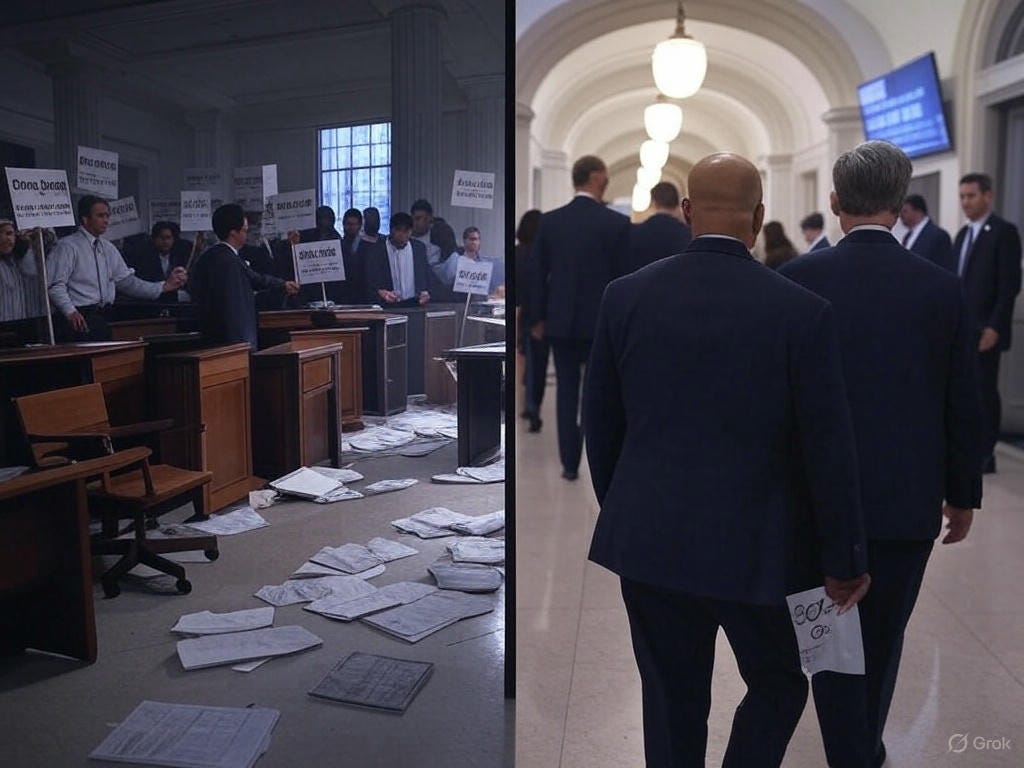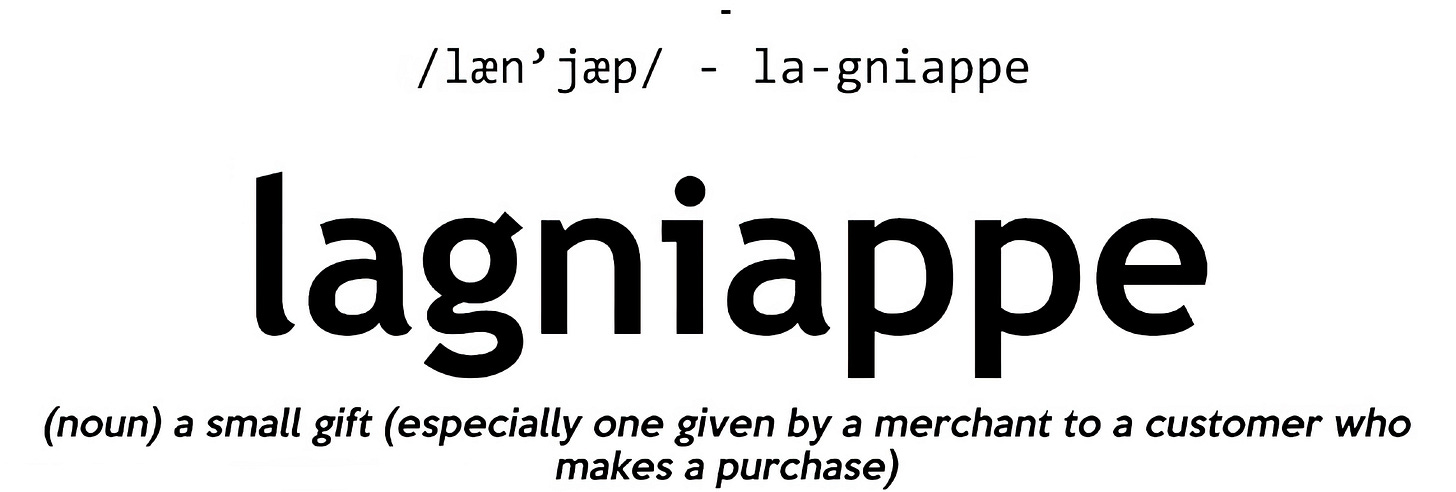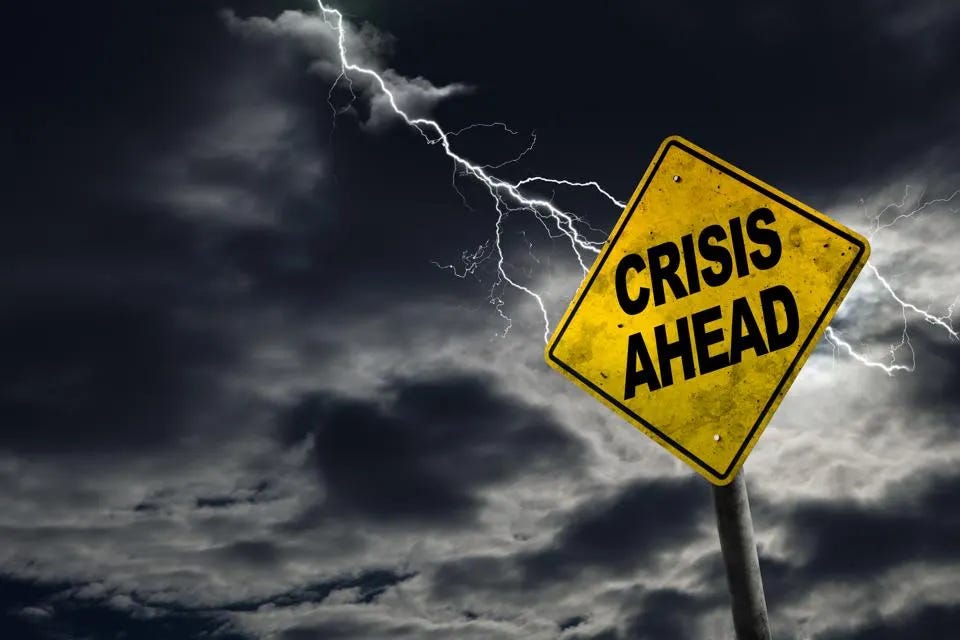Why a Government Shutdown Won’t Be "The Win" Democrats Are Hoping For...
Senate Democrats are flirting with a shutdown to gain leverage, however, history—and the current political landscape—suggest it’s a risky gamble that could backfire spectacularly. (Reprobates all...)
As the clock ticks down to a potential government shutdown this Friday, Senate Democrats are grappling with a high-stakes dilemma.
They believe a shutdown could give them leverage to push back against Republican spending cuts and assert their priorities.
But is this strategy as foolproof as they think?
History and the current political dynamics suggest otherwise.
The GOP’s Stopgap Bill: A Political Time Bomb
House Republicans narrowly passed a "clean" funding bill this week, kicking the can down the road to the Senate. The bill maintains current spending levels through the fall, effectively passing the buck to Senate Democrats.
With the House already adjourned until late March, the pressure is squarely on the Senate to act.
Senate Democrats, however, are balking at the GOP’s proposal, which includes $13 billion in cuts to non-defense programs—cuts they argue will harm housing, nutrition, and health care initiatives.
But their alternative—a 30-day continuing resolution (CR)—is unlikely to gain traction.
This leaves Democrats with two unappealing options:
accept the GOP’s bill or
force a shutdown.
Neither is a clear win.. and both carry significant political risks.
The 2013 Shutdown: A Cautionary Tale
For those who remember the 2013 government shutdown, the parallels are hard to ignore.
Back then, Democrats, led by President Obama, used the shutdown as a political cudgel against Republicans.
The administration went to great lengths to make the shutdown as painful as possible, from barricading national parks to shutting down websites and even roping off playgrounds.
The message was clear: Republicans were to blame for the chaos.
But this time, the roles are reversed.
If Democrats force a shutdown, they risk being seen as the instigators.
And with Republicans controlling the narrative—and the Office of Management and Budget (OMB)—they could use the shutdown to advance their own agenda.
OMB Director Russ Vought, a staunch advocate for limited government, would have significant authority to implement cuts during a shutdown, something Democrats are already dreading.
The Optics Problem
Democrats are acutely aware of the optics.
A shutdown would furlough over 2 million federal workers, disrupt critical services, and likely draw public ire.
While they hope to pin the blame on Republicans, the reality is that shutdowns are rarely good politics for anyone. And with Senate Democrats in swing states facing reelection, the fallout could be particularly damaging.
Moreover, President Trump’s unpredictability adds another layer of uncertainty.
How he handles a shutdown—and the messaging around it—could further complicate matters for Democrats.
As Senator Angus King (I-Maine) put it, “It’s the devil that we know against the devil that we don’t know.”
A No-Win Situation
At its core, this standoff highlights the challenges of divided government.
Democrats are trying to assert their influence in a Republican-controlled House, but their options are limited. The GOP’s CR is far from ideal, but it keeps the government open. A shutdown, on the other hand, is a high-risk gamble with no guarantee of payoff.
As Senator John Hickenlooper (D-Colo.) aptly summarized, “They’re both horrible outcomes.”
Democrats may feel they have no good choices, but forcing a shutdown could end up being the worst of them all.
The Bottom Line
While Senate Democrats may see a shutdown as a way to flex their political muscles, the reality is that it’s a double-edged sword.
History shows shutdowns rarely benefit the party that instigates them, and the current political landscape only amplifies the risks.






I say, shut it all down, better yet, burn it all down and build it back better without all of these cockroaches.